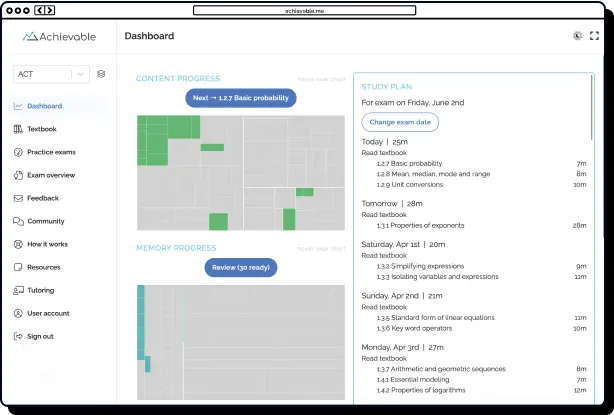
Explore NPTE-PT/PTA pass rates by program




Table of contents
Careers in physical therapy are highly sought after within the healthcare industry. As the U.S. population ages, the demand for both licensed physical therapists and qualified physical therapy assistants continues to rise. To begin a career as a physical therapist or meet physical therapy assistant requirements, individuals must first pass the NPTE, formally known as the National Physical Therapy Examination.
The NPTE is a standardized licensing exam overseen by the Federation of State Boards of Physical Therapy (FSBPT). It is required in all 50 states for those seeking licensure as either a physical therapist (PT) or a physical therapy assistant (PTA). Passing the NPTE exam is an essential milestone on the path to practicing in this rewarding field. The examination validates that each candidate possesses the foundational knowledge and professional skills necessary for safe and effective physical therapy care.
Understanding what topics are included on the NPTE PTA and PT exams, being aware of current passing standards, and knowing how to access reputable NPTE study materials are all important for those pursuing licensure. With proper preparation, prospective doctors and assistants are better positioned to successfully navigate the licensure process and launch their careers in physical therapy.

What is the NPTE-PT? And what is the NPTE-PTA?
The NPTE is a comprehensive physical therapy exam designed to assess the essential knowledge and clinical reasoning skills required for entry-level physical therapists and physical therapist assistants. There are two versions of the exam: the NPTE-PT for physical therapists and the NPTE-PTA for physical therapist assistants.
The NPTE-PT consists of 225 questions administered over a 5-hour period. It evaluates candidates’ understanding of core concepts of physical therapy and related medical care. This physical therapy exam covers critical areas such as key body systems, neurodevelopmental training, and anatomical and therapeutic concepts essential for competent practice.
The NPTE PTA exam is specifically tailored for physical therapist assistants. This physical therapy licensure exam features 180 questions over 4 hours, focusing on anatomical knowledge and applied clinical skills necessary for this role.
While the NPTE PTA exam covers topics similar to those of the NPTE-PT, its shorter format and targeted content reflect the distinct responsibilities of a physical therapist assistant in applied settings. Both the NPTE-PT exam and NPTE PTA exam are scored on a standardized scale from 200 to 800, with a minimum score of 600 (75%) required to pass. Mastering tested domains is a crucial step for passing the test and achieving success in launching a career in physical therapy.
NPTE-PT and NPTE-PTA content outline
The NPTE-PT and PTA exams are divided into two main sections: Body System and Nonsystem. Body System sections represent the bulk of both exams, covering major biological and anatomical systems and their interactions. Nonsystem questions focus on equipment, safety, therapeutic implementation, and other topics related to treatment and practical responsibilities. The main content areas of both exams include:
- Cardiovascular and pulmonary systems: The anatomy and physiology of the heart, blood, and lung systems. Explores disease prevention, diagnosis, movement analysis, and complications.
- Musculoskeletal system: Anatomy, physiology, and biomechanics of muscles, joints, bones, and tendons.
- Neuromuscular and nervous systems: Anatomy and physiology of nerves, motor neurons, and muscle fibers. Also covers motor control and learning, regenerative medicine impacts, balance, and coordination.
- Other systems: Covers a broad range of other biological systems such as the integumentary, metabolic and endocrine, gastrointestinal, genitourinary, and lymphatic systems.
- Non-system domains: Therapeutic modalities and professional responsibilities such as patient/client rights, safety and protection standards, state and federal laws, and professional ethics.
Each Body System section includes questions that can be divided into three subsections. The number of questions for each category on both exams is as follows:
NPTE-PT
- Physical Therapy Examination: 38 - 50 questions
- Foundations for Evaluation, Differential Diagnosis, and Prognosis: 51 - 66 questions
- Interventions: 47 - 58 questions
NPTE-PTA
- Physical Therapy Data Collection: 22 - 34 questions
- Diseases/Conditions that Impact Effective Treatment: 34 - 53 questions
- Interventions: 33 - 49 questions
The differences in content areas and question weights between the two exams highlight important differences in the roles and responsibilities of PTs and PTAs.
Physical therapists vs. physical therapist assistants
Physical therapists are healthcare professionals who evaluate, diagnose, and develop customized treatment plans for patients dealing with a broad range of injuries, from minor acute conditions to chronic musculoskeletal disorders. These specialists in physical therapy often work autonomously and may focus their practice within specific areas such as orthopedics, pediatrics, or sports medicine. For those interested in pursuing this career, meeting physical therapy requirements involves several essential steps:
- Earning a Doctor of Physical Therapy (DPT) degree from an accredited institution
- Successfully passing the NPTE-PT (National Physical Therapy Examination for Physical Therapists)
- Passing a state-specific licensure exam
Individuals considering how long it takes to become a physical therapist should be aware that these requirements typically mean completing several years of advanced education and supervised clinical experience.
Physical therapist assistants play a vital role in supporting patient care within physical therapy settings. Working closely with licensed physical therapists, they help implement treatment plans, track patient progress, and ensure effective clinical workflow. Their collaboration is crucial for achieving optimal outcomes in patient rehabilitation. The main physical therapy assistant requirements are:
- Completing an associate’s degree or equivalent from a Commission on Accreditation in Physical Therapy Education (CAPTE)-accredited physical therapy assistant program
- Passing the NPTE-PTA (National Physical Therapy Examination for Physical Therapist Assistants)
- Passing a state-specific licensure exam
The process of becoming a PTA usually takes two to three years, depending on the length of the program and the time spent preparing for and taking certification exams.
NPTE-PT pass rates by program

When evaluating top physical therapy programs, it’s important to consider each school’s NPTE exam pass rate. The average NPTE-PT pass rate typically ranges from 85% to 90% annually for first-time test takers who are graduates of U.S.-accredited PT programs. Not every school publishes NPTE pass rates for their specific DPT programs, but the chart above shows that many programs that do publish NPTE statistics boast a high student pass rate. Enrolling in a program with consistently high NPTE performance can provide you with the comprehensive training and academic support necessary for success on the exam.
On the FSBPT's official site, you’ll find the NPTE-PT exam pass rates by program, presented as averages over two-year cycles. Reviewing the NPTE exam pass rate for your prospective schools can help you make an informed decision when selecting a top physical therapy program.
NPTE-PTA pass rates by PT program

NPTE exam pass rates by program are useful pieces of knowledge for anyone interested in pursuing a PTA diploma or certification. Each year, the average NPTE pass rate for PTA candidates typically ranges from 80% to 85%. For PTA programs that publish the proportion of students who passed the NPTE, the majority of schools reported rates above 90% Reviewing NPTE-PTA pass rates by program can help you assess how well different schools prepare students for the exam.
Here, you’ll find NPTE-PTA pass rate data organized by program, calculated as averages over the most recent two-year reporting cycles. This information can be a valuable resource when evaluating your options and setting goals for your own NPTE score.
Top physical therapy programs
Before you can become a physical therapist or take the NPTE, it’s essential to complete the required education and earn a Doctor of Physical Therapy (DPT) degree. The length of time it takes to be a physical therapist varies, but most DPT programs require about three years of graduate study after completing an undergraduate degree, meaning it typically takes around seven years in total.
Choosing one of the top physical therapy programs can provide a strong career foundation. According to U.S. News and World Report, these are some of the leading schools for physical therapy (DPT) programs, along with NPTE pass rates for the 2022-2023 academic year:
- University of Delaware: NPTE pass rate not reported
- Washington University in St. Louis: NPTE pass rate of 98.31%
- University of Iowa: NPTE pass rate of 88%
- Duke University: NPTE pass rate of 97.62%
- Emory University: NPTE pass rate of 100%
- Northwestern University: NPTE pass rate of 100%
- The Ohio State University: NPTE pass rate of 100%
- University of Southern California: NPTE pass rate of 99.48%
- University of Pittsburgh: NPTE pass rate not reported
- Creighton University: NPTE pass rate of 100%
Graduating from one of these top physical therapy programs prepares you for a successful future as a physical therapist. For those interested in becoming a physical therapist assistant, plenty of colleges offer dedicated 2-year programs. You can find accredited PT and PTA programs on the American Physical Therapy Association (APTA)’s school directory to explore all available education pathways.
Understanding the education path, including how long it takes to become a physical therapist, can help set the stage for your career in physical therapy.

How to study for the NPTE-PT or NPTE-PTA
To prepare for the NPTE exam, consider the following effective study tips:
- Begin your NPTE exam preparation early by reviewing content at least 3-6 months before test day.
- Develop a comprehensive NPTE study plan that thoroughly addresses each exam topic. Schedule regular review sessions and planned breaks to keep your mind sharp and reduce burnout.
- Rely on trusted NPTE study materials, including official NPTE study guides from the FSBPT and other reputable NPTE study materials that provide reliable practice questions and explanations.
- Take multiple full-length NPTE practice exams to simulate real exam conditions: time yourself strictly, eliminate external distractions, and wait to check your answers until the end to increase readiness.
- Joining a study group or working with a tutor can enhance your understanding of the NPTE exam material, promote discussion, and help keep you accountable throughout your NPTE preparation journey.
By using these NPTE exam study strategies and quality NPTE study materials, you’ll be more prepared and confident on test day.
Key takeaways
A career as a physical therapy assistant or physical therapist offers the unique opportunity to work with patients across a wide spectrum of rehabilitative environments, helping individuals recover from injury and regain function. To begin working in this rewarding field, candidates must pass the NPTE as part of the licensing process. Both exams and positions demand a strong knowledge of human anatomy, an understanding of how various therapeutic treatments and manual techniques impact the body, and the ability to support patients throughout their recovery journey.
PTs and PTAs encounter diverse cases ranging from athletes experiencing sports injuries, workers in demanding occupations affected by job-related strains, and older adults in need of continuing care. Individuals dealing with short-term injuries or chronic physical conditions benefit from the targeted treatments and preventive care delivered by dedicated physical therapy professionals. This collaborative approach helps prevent further injury and promotes long-term health.
For those interested in a profession where they can help others and leverage an in-depth understanding of the human body to foster healing, pursuing a path as a physical therapy assistant or therapist may be an excellent choice. By meeting all physical therapy requirements and preparing thoroughly for the required physical therapy exam, you can start building a career that makes a real difference in patients’ lives.

